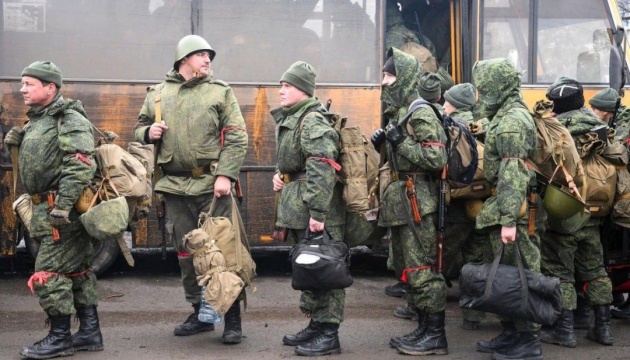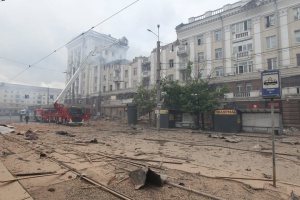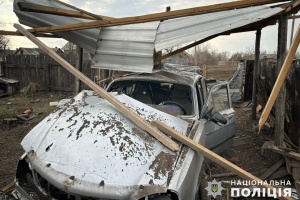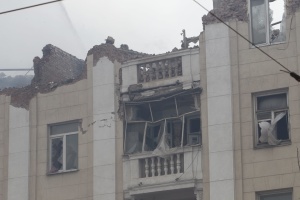
Goodwill gesture: how Russia invents justifications for its losses and how mobilization can change things
So, the Russians believe that the ships Moskva and Saratov burned down for “unknown reasons” and that Russian military facilities in Ukrainian Crimea and in the Russian territory catch fire due to the “lens effect.”
Now the Kremlin, allegedly with almost no losses, has announced a “partial” mobilization in Russia. Moscow is recruiting at least 300,000 more Russians for the war against Ukraine.
Let’s talk about why Russia doesn’t publish the real statistics of its military losses during its invasion of Ukraine and why the Russian people are still more than comfortable with that.
Russian military losses in Ukraine: figures
According to the latest data from the General Staff of the Armed Forces of Ukraine, Russia has already lost more than 58,000 of its soldiers in the full-scale war against Ukraine. The daily losses of the Russian army amount to approximately half a thousand people. There are also thousands of lost Russian tanks, armored fighting vehicles, artillery systems, and automotive equipment. Especially, the losses became noticeable after the counteroffensive of the Ukrainian defenders in the Kharkiv region.
At the same time, according to the Pentagon, as of mid-August, 70 to 80 thousand Russian servicemen were killed or injured since the beginning of the invasion of Ukraine.
The Kremlin, however, is silent about its losses. For the third time in the entire war, Moscow published data on Russian losses on the eve of the announcement of “partial” mobilization, on September 21. According to the Minister of Defense of the Russian Federation, Sergei Shoigu, Russian losses for almost seven months of the war amounted to 5,937 soldiers. It’s obvious that such statistics have nothing to do with reality.
Moreover, “the world’s second army” is ashamed to admit the losses in weapons and military equipment that Ukraine has inflicted on it since the beginning of the war. That is why Russian propagandists invent comical explanations for the causes of explosions and destruction at their military facilities.
Goodwill gestures and "pops" in Russia
Months passed one after another, but Russia’s Ministry of Defense still failed to name the actions behind the destruction of Russia’s two key navy elements: to wit, the Tapir-class landing ship Saratov and the missile cruiser Moskva. The official government versions mention “ignition for unknown reasons.”
Another Russia’s failure is fake news of the “goodwill gesture” on Snake Island. Russian troops were said to leave the island under the pretense of not interfering with the humanitarian corridors for Ukrainian grain export. But, to start with, Ukrainian defenders forced Russian occupiers out of the island. Plus, Russia intentionally blockaded ports and shelled Ukrainian grain storages to induce a food crisis.
Similar ridiculous excuses came to Russia’s rescue after the explosions at the Novofedorivka airbase in the temporarily occupied Ukrainian Crimea. According to Russian authorities, its cause was “smoking in inappropriate places.” Quite naturally, it would be a catastrophe for Russian authorities to tell the truth to their people: it’s definitely not good that the Armed Forces of Ukraine destroy Russian missile carriers right at their bases.
But Russian madness reached its peak when explosions shook Belgorod ammo dumps. Ignoring the satellite images showing destroyed Russian airbase premises, the local “governor” came up with an “optical lens effect” to explain those explosions.
That was when Russian curators invented new terms to hide their military failures. A real explosion and the ensuing fire in their territory will be referred to as a “pop” (“khlopok” in Russian), and retreating and fleeing the previously occupied territories of Ukraine are apparently a “radical decrease in military activity.” The Kremlin hopes that all these “tricks” will help mitigate the people’s dissatisfaction with failures on the frontline.
Why do Russians still believe the Kremlin’s tall tales?
The main reason is that the Russian army in Ukraine mostly “disposes of” troops from depressed areas where ethnic minorities live. People from large and relatively progressive cities are far less involved in military aggression. Because the Buryats, Dagestanis, Chechens, and others live in faraway regions, the army’s losses rarely become a matter of great public concern across the country.
The mobilization that has just started can influence the change of public opinion in Russia. Putin was looking for a way to prevent this. But the successful Ukrainian counteroffensive in Kharkiv and Kherson regions left him no choice. In fact, Putin had only two options, either to admit defeat or to continue the escalation and declare mobilization. The Kremlin claims that the mobilization is “partial”. But information from open sources shows that this is not the case at all. The Russian Federation is sending everyone to fight in Ukraine without any training, without military experience and support.
Meanwhile, the Kremlin is again betting on “cannon fodder” from the depressive regions. But these regions are not bottomless. And the facts of mobilization in big cities, including Moscow, are already known. Actually, this mobilization has a chance to change the mood in the Russian Federation. After all, the number of Russian families affected by the war will increase significantly. Therefore, this destructive war can finally, after seven months of deaths, cause discontent among the passive Russian people. And maybe even protests, which the Kremlin is still very afraid of.
Center for Strategic Communication and Information Security




